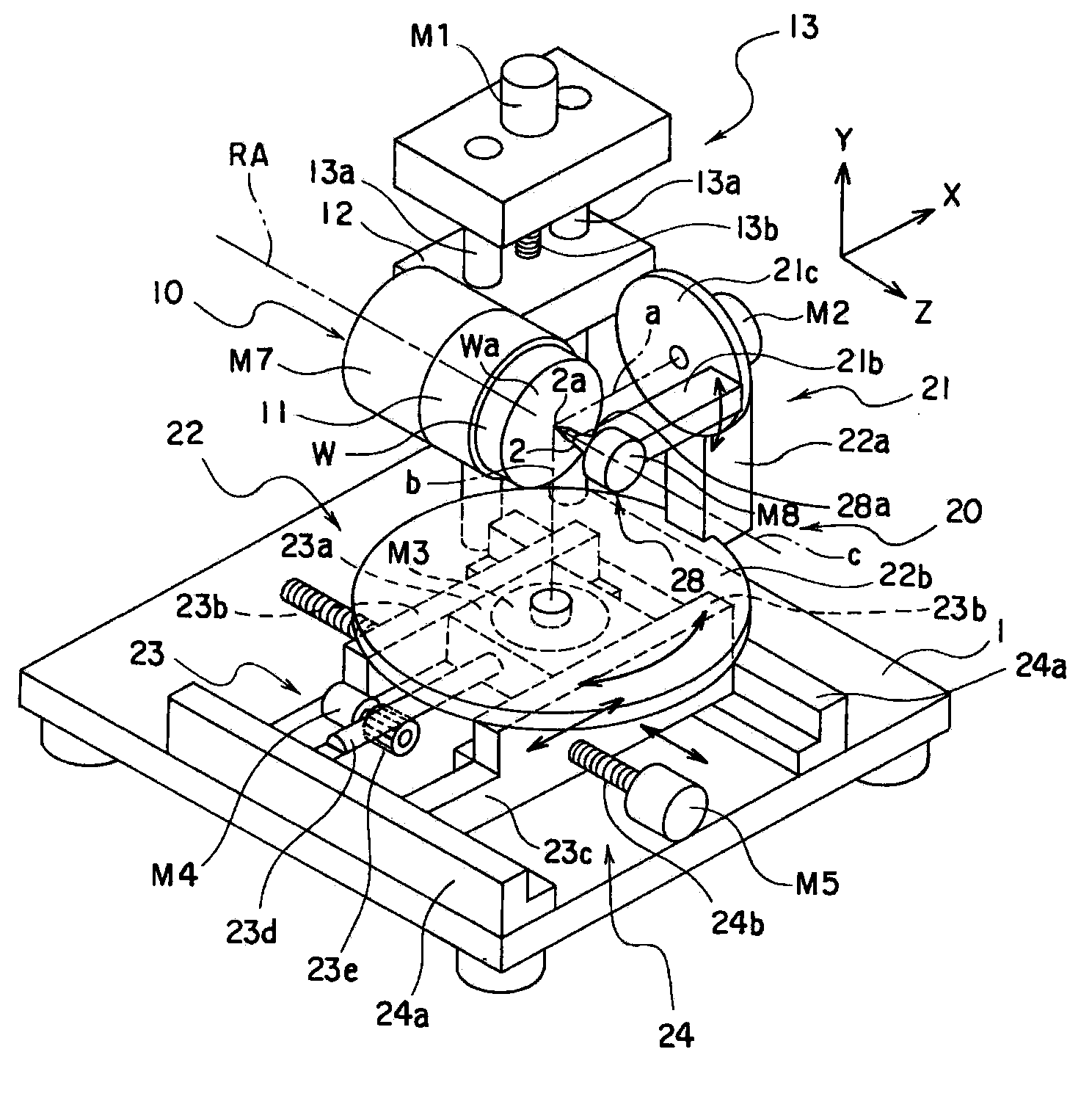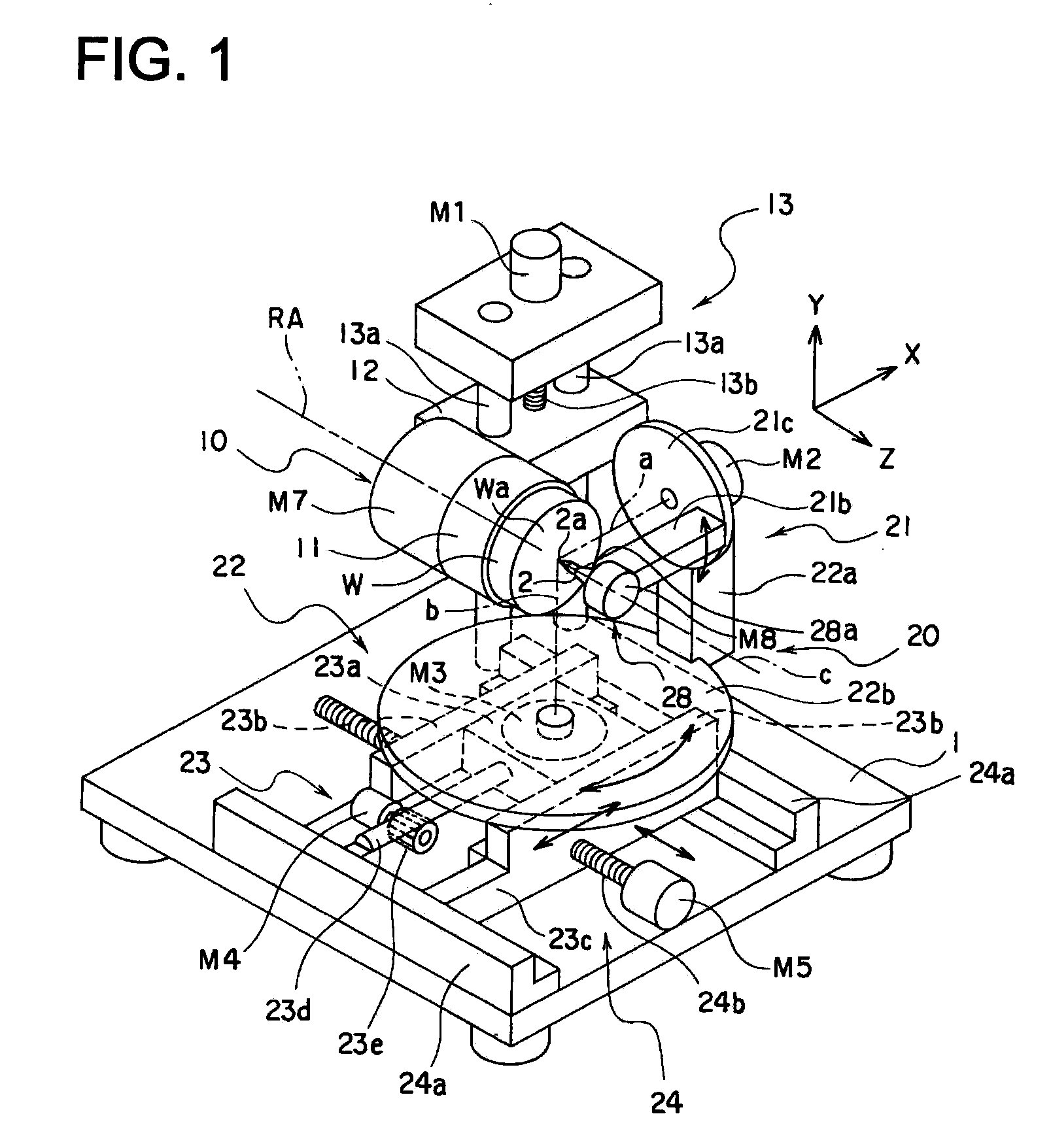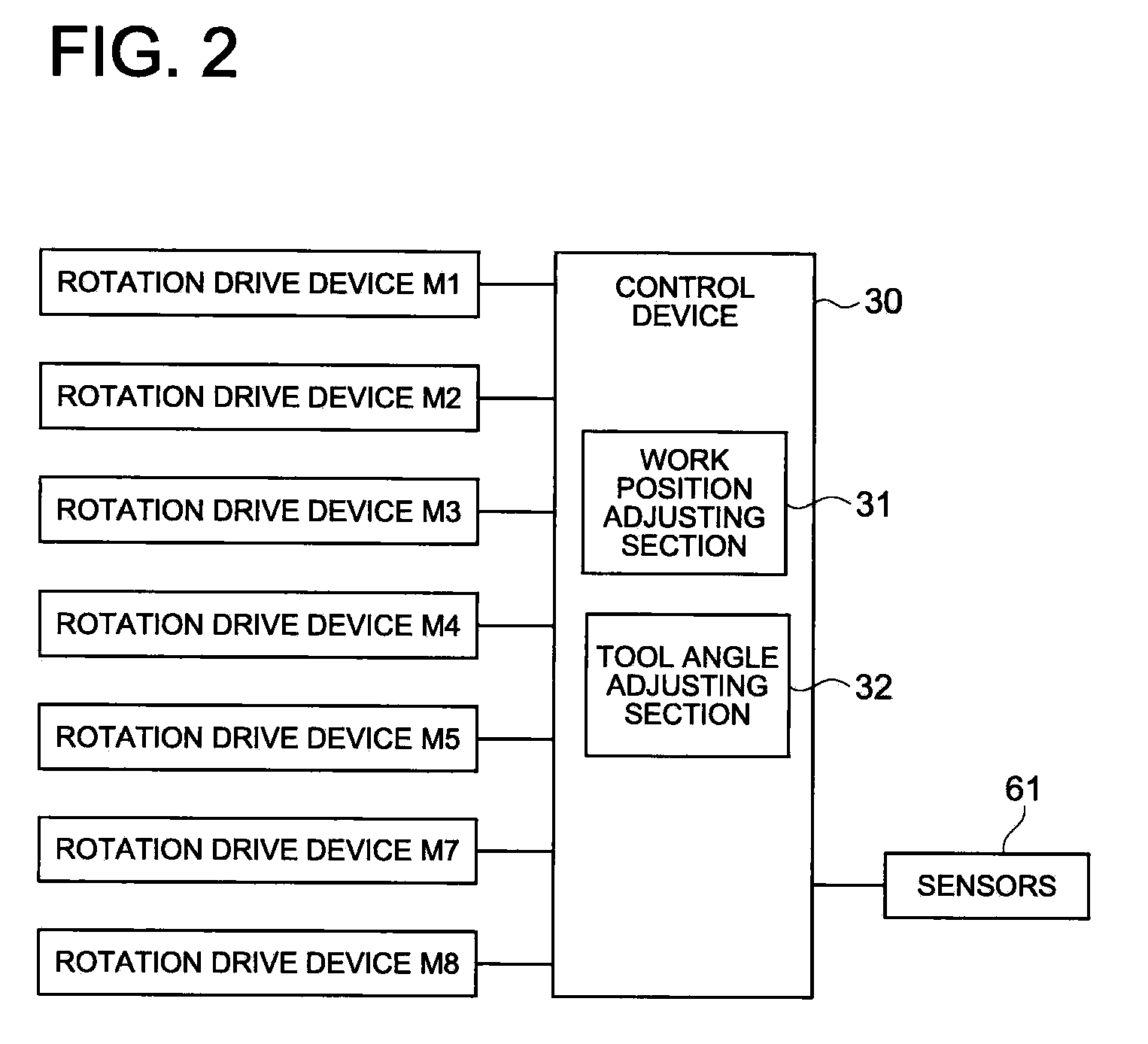Multiaxis machining apparatus
- Summary
- Abstract
- Description
- Claims
- Application Information
AI Technical Summary
Benefits of technology
Problems solved by technology
Method used
Image
Examples
first embodiment
[0052]A multiaxis machining apparatus related to a first embodiment of the present invention will be described with reference to the drawing.
[0053]FIG. 1 is a perspective view schematically showing a multiaxis machining apparatus of the first embodiment.
[0054]As FIG. 1 shows, the Multiaxis machining apparatus is to create a cutting surfaces such as a molding surface of a metal mold to form an optical surface of an optical element such as a lens and a transfer optical surface by cutting work, having a work retaining section 10 and tool retaining section 20 on a base 1.
[0055]The work holding section 10, having a chuck 11 to hold a work W representing a cutting object and a motor, is provided with a rotation drive device M7 to support the chuck 11 rotatably centering around a rotation axis RA, an elevation member 12 to descend and ascend along with the rotation derive device M7 and the chuck 11, while supporting the rotation drive device M7, and an elevation drive device 13 to guide th...
second embodiment
[0084]A multiaxis machining apparatus of the second embodiment related to the present invention will be described with reference to the drawings as follow. Incidentally, since the second embodiment is a modified version of the multiaxis machining apparatus of the first embodiment, portions thereof not described are the same as that in the multiaxis machining apparatus of the first embodiment.
[0085]FIG. 8 is a perspective view showing relevant portions of the multiaxis machining apparatus of the second embodiment. A first tool rotation device 421 is configured with a movable member 421c in a shape of a channel, supporting the third tool rotation device 28, rotatable centering around a rotation axis a, a rotation drive device M2 having a motor whose axis is connected with the one end of an axis of the movable member 421c to rotate the movable member 421c in a clockwise and an anticlockwise directions via the axes, and a bearing section 421d to support the other end of the axis of the ...
third embodiment
[0086]A mult- of the third embodiment related to the present invention will be described with reference to the drawings as follow. Incidentally, since the third embodiment is a modified version of the multiaxis machining apparatus of the first embodiment, portions thereof not described are the same as that in the multiaxis machining apparatus of the first embodiment.
[0087]FIG. 9 is a perspective view showing relevant portions of the multiaxis machining apparatus of the third embodiment. A second tool rotation device 522 is configured with a turntable 22b to support a first tool rotation device 521, a support member 522a standing on the turntable 22b in a shape of a L character rotatable centering around the rotation axis along with the turntable 22b, a rotation drive device M3 having a motor, whose axis is directly connected with an end of an axis of the turntable 22b, to rotate the turntable 22b in a clockwise and an anticlockwise directions via the axis and a bearing section 522d ...
PUM
| Property | Measurement | Unit |
|---|---|---|
| Angle | aaaaa | aaaaa |
Abstract
Description
Claims
Application Information
 Login to View More
Login to View More - R&D
- Intellectual Property
- Life Sciences
- Materials
- Tech Scout
- Unparalleled Data Quality
- Higher Quality Content
- 60% Fewer Hallucinations
Browse by: Latest US Patents, China's latest patents, Technical Efficacy Thesaurus, Application Domain, Technology Topic, Popular Technical Reports.
© 2025 PatSnap. All rights reserved.Legal|Privacy policy|Modern Slavery Act Transparency Statement|Sitemap|About US| Contact US: help@patsnap.com



